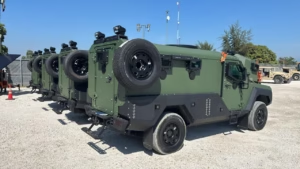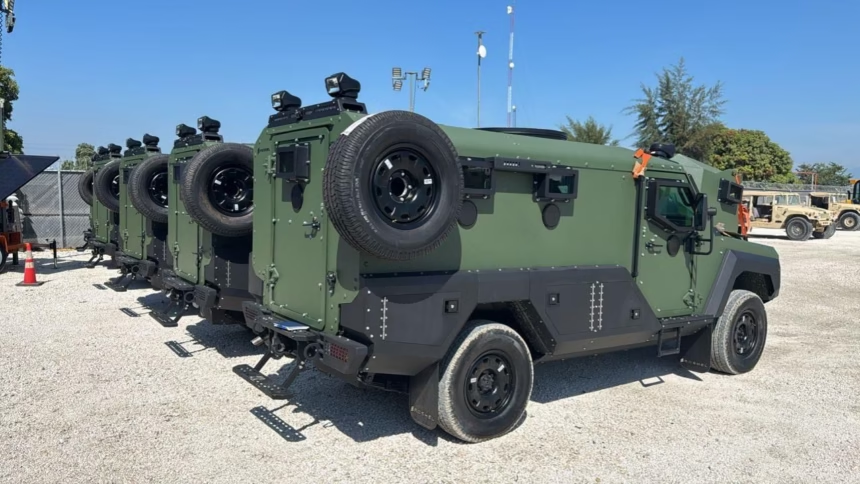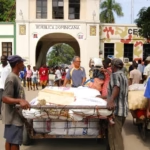The U.S. Embassy delivered 20 armored vehicles to Haiti’s Gang Repression Force (FRG) this week, highlighting U.S. support for the country’s security. On the ground, observers remain skeptical, citing ill-suited equipment and lack of an overall strategy.
In a statement posted to its official Facebook page on Tuesday, October 7, 2025, the embassy announced that the delivery was made through the State Department’s Bureau for International Narcotics and Law Enforcement Affairs (INL). The stated goal is to “strengthen the operational capabilities” of the FRG and the Haitian National Police (PNH) in their fight against armed groups that are paralyzing the country.
“This initiative demonstrates the United States’ ongoing commitment to security in Haiti,” the embassy said, noting that the assistance falls within a long-standing bilateral cooperation framework.
The shipment has raised serious concerns. Similar armored models previously supplied to the Multinational Security Support Mission (MSS) have been deemed “inappropriate” for Haiti’s operational realities.
Beyond equipment, critics question the entire rollout of the FRG. Some argue the United States has “started off on the wrong foot” in operationalizing the force.
“It feels more like a communications exercise than a genuine effort to help resolve Haiti’s security crisis,” one observer said. “Washington is sending hardware, but where is the coordinated strategy for the rapid and effective deployment of the new anti-gang force?”
The American initiative also appears to lack robust international backing. According to diplomatic sources, some relevant countries have been reluctant to fully commit to the FRG.
In an exclusive interview with CTN on Wednesday, former U.S. chargé d’affaires in Haiti, Luis Moreno, warned that troops for the gang suppression force may not be deployed to Haiti in the near term. In his view, it would take “at least six months” before Haitians begin to see the first contingents arrive.
The retired diplomat lamented that “no country has made a formal commitment” regarding troop contributions.
As Haitians continue to endure daily violence at the hands of gangs, the latest U.S. shipment is being greeted with guarded optimism at best. While the move underscores that Haiti’s crisis remains a priority for Washington, it also highlights the gap between diplomatic announcements and the complex realities on the ground—realities that will require much more than armored vehicles to restore peace. The FRG’s credibility, and that of its supporters, will be measured not in showrooms but by its concrete ability to return Haiti’s streets to the people who live there.








